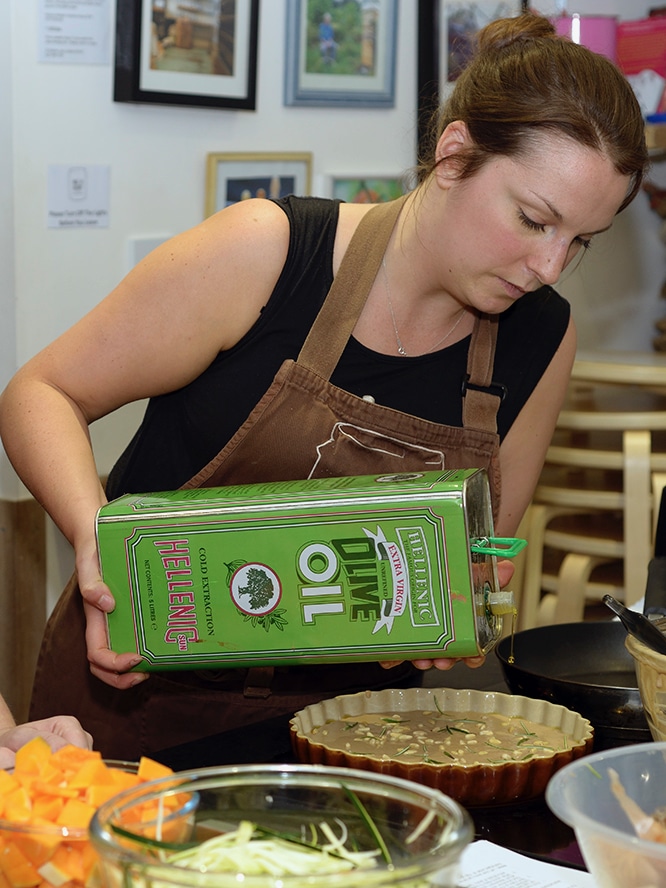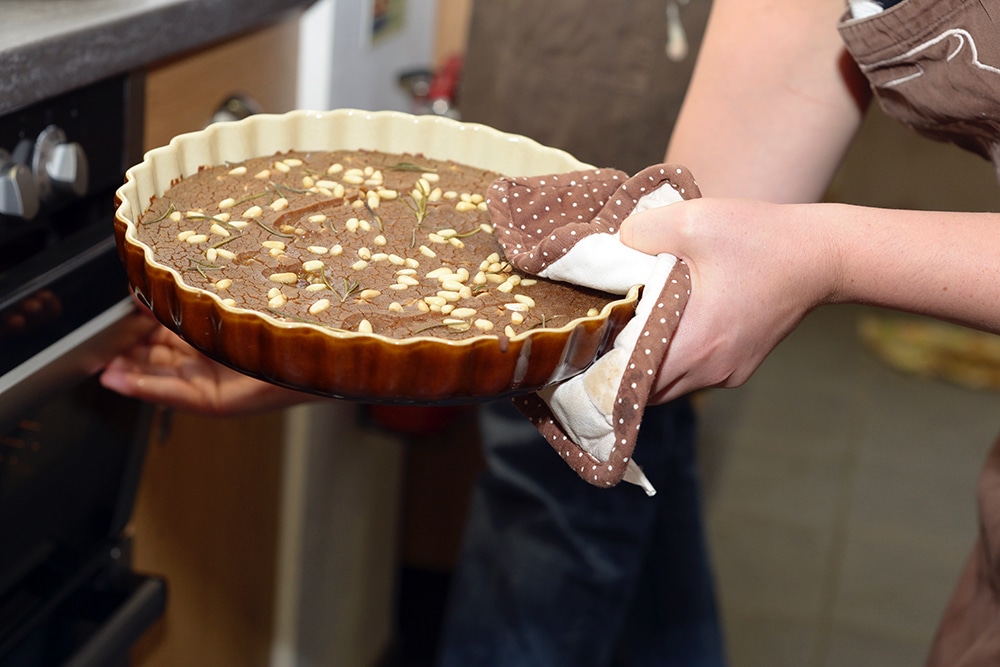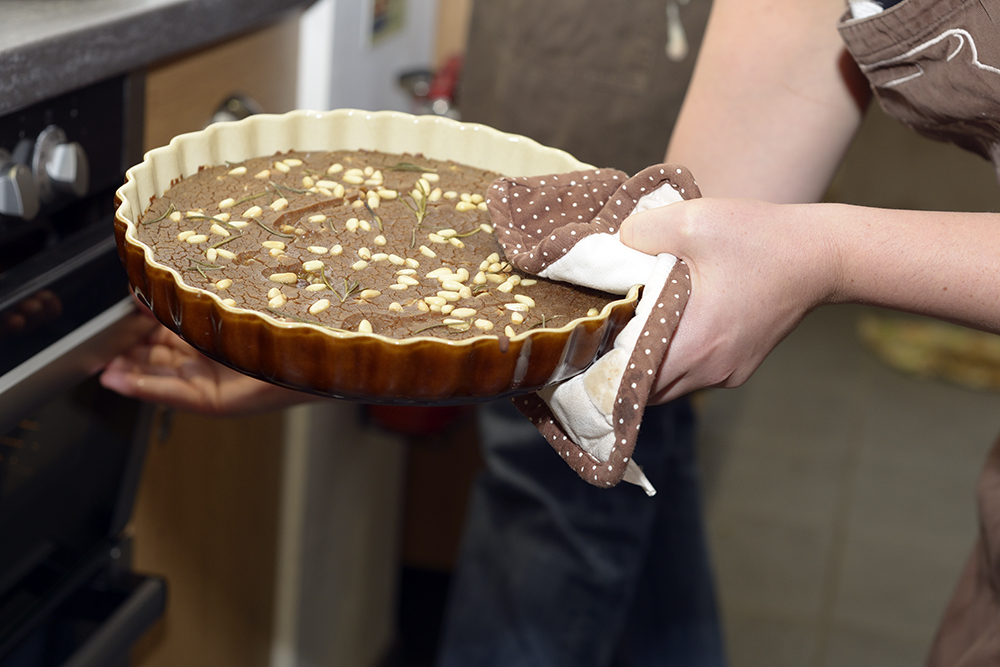I discovered Italian chestnut flour a few years ago on one of my many visits to Italy to see my Uncle and Aunty who live there. I subsequently learned about Castagnaccio which is a traditional Tuscan chestnut flour cake. It’s made with flour, water and a little olive oil, so is naturally vegan.
There are tonnes of variations to this recipe about, I don’t add extra sugar to mine as I like the strong sweet taste of the flour. If you wanted to make it sweeter you could add some! Personally I don’t think you need anything extra, it was sweet enough. Traditionally the cake is covered in pine nuts, but make use of what you have. The rosemary makes for a very interesting taste sensation, which I really like, but be warned the end result doesn’t have a cakey texture – it is quite dense so be prepared for something quite different and quite unlike the consistency of a Victoria Sponge cake.

Teaching Castagnaccio at Made in Hackney
Never fear though, you don’t have to go to Italy to get the flour. Chestnut flour is available in the UK – just harder to come by and not something I have yet seen in a general supermarket aisle. (Try searching on-line if you get stuck or perhaps in an Italian delicatessen it should retail around £4-5 for a 500g bag).
- 250g chestnut flour
- 350 mls filtered water
- pinch of salt
- extra virgin olive oil
- 40g sultanas
- 25g nuts (pine, walnut, almond)
- Fresh rosemary
- Pre-heat the oven to 180 degrees Celcius.
- Sieve the flour into a large mixing bowl to get rid of any lumps, then pour in the cold water bit by bit stirring till the mixture resembles a pourable batter. Stir in 2 tablespoons of olive oil. Set aside for 30 mins.
- Meanwhile soak the sultanas in warm water for around 20 minutes, this brings out the sweetness, and allows them to plump up.
- After 30 mins, add half of the chopped nuts to the flour-batter mixture, along with the drained sultanas.
- Grease a large shallow baking tin with half a tablespoon of olive oil.
- Pour in the batter (it should be around 1cm deep), and sprinkle with the remaining nuts, and all of the fresh rosemary. Drizzle a further tablespoon of olive oil over the cake.
- Bake in the upper part of the oven for 40 minutes. During cooking the top of the cake will crack. This is how it is meant to look, don't worry!
Photo updated September 2014, when I had the opportunity of teaching this fabulous cake at a community class at London’s Made in Hackney. Photo credit Scrumptious Food Photography / Rhowena MacCuish



1/4 C. of raw cacao and 1/4 C. of cacao nibs make lovely additions. Just up the amount of liquid to compensate for the extra dry stuff (left over coffee, if you have it).
Wow – you did this to this cake? Sounds fantastic! I tried it with carob once but not yet with cocoa – thank you!